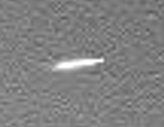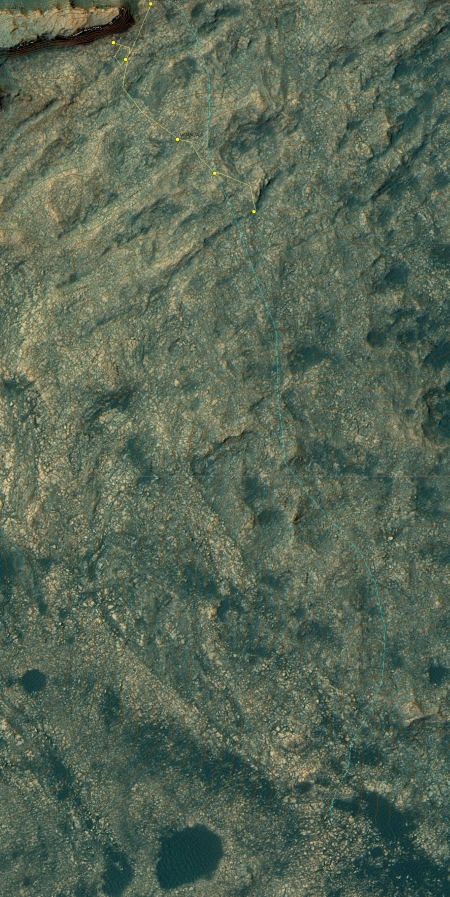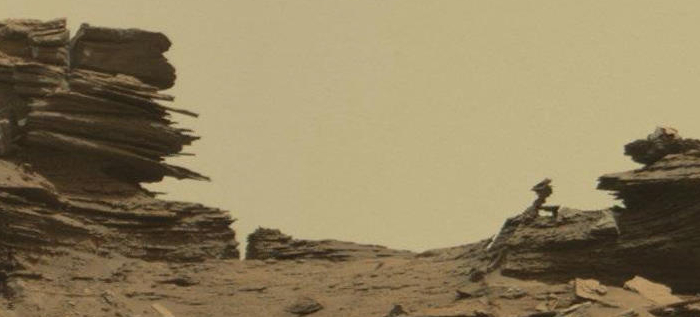Did Opportunity see Schiaparelli?

Because Schiaparelli was aimed at a landing site somewhat close to the Mars rover Opportunity, the science team aimed the rover’s panoramic camera at the sky yesterday, taking fourteen pictures in the hope of capturing the lander as it came down. Of those fourteen images, the image on the right, reduced in resolution, is the only one that shows that bright streak in the upper right.

Though this streak might be an artifact, I do not think so. To the left is a close-up from the full resolution image, showing the streak in detail. That doesn’t look like an artifact. It still could be a meteorite, but I also think that doubtful. The coincidence of a meteorite flashing across the sky at the same exact moment Opportunity is looking to photograph Schiaparelli’s landing is too unlikely.
If this is Schiaparelli, expect a press release from NASA in the next few days.

Because Schiaparelli was aimed at a landing site somewhat close to the Mars rover Opportunity, the science team aimed the rover’s panoramic camera at the sky yesterday, taking fourteen pictures in the hope of capturing the lander as it came down. Of those fourteen images, the image on the right, reduced in resolution, is the only one that shows that bright streak in the upper right.

Though this streak might be an artifact, I do not think so. To the left is a close-up from the full resolution image, showing the streak in detail. That doesn’t look like an artifact. It still could be a meteorite, but I also think that doubtful. The coincidence of a meteorite flashing across the sky at the same exact moment Opportunity is looking to photograph Schiaparelli’s landing is too unlikely.
If this is Schiaparelli, expect a press release from NASA in the next few days.










